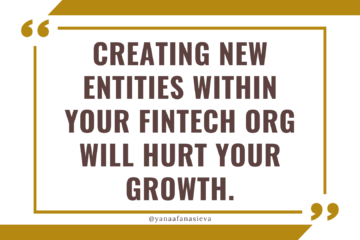Liechtenstein Blockchain Act and Where You May Need Interpretation

I shared earlier that, in my view, the Liechtenstein Blockchain Act is a very advanced, helpful and comprehensive legislation, providing a lot of clarity for market participants.
However, as everyone moves into implementation, most FinTech startups I talked to, run into some level of ambiguity with the following critical questions:
- What is the difference between the Token Depository and the Token Protector?
and
- If I display any kind of prices for tokens, does it always mean I am providing the Token Price Services or not?
These questions are important, because everyone who applies for the Blockchain license in Liechtenstein, will have to define and specify, which services they are going to provide, and, in case of the Token Protector (as opposed to Token Depository), the Trustee license is also required in addition to the Token Protector license.
What’s the difference between the Token Protector vs Token Depository?
“TT Token Depositary is a person who safeguards Token in the name and on account of others” and “TT Protector is a person who holds Tokens on TT Systems in their own name on account for a third party”.
It goes without saying, that in both cases it is mandatory to safeguard customer funds separately from your own operational funds and business assets.
In a very simplified form you could view these services as two forms of custodial arrangements or how do you safeguard customer funds: do you store customer funds on one omni-account that you opened on your own name (somewhat similar to the omni safeguarding accounts you would open with a bank) or do you open safeguarding accounts or wallets separately for each of your customers on their names.
Some of the most common (and yet to be clarified) questions are:
- What if I manage some hardware (e.g. ledger or trezor) wallets separately for each customer but keep cold wallets together (because it’s more practical)?
- What if I open wallets to customers using their unique number, but not their name?
- Do I need to always use the same blockchain address for the customer’s ongoing transactions or can I open them new addresses each time?
- How to categorize storage with BitGo or other outsourcing partners?
Obviously, everyone is different, but the overall logic of how to arrive to the right service category would be, in my opinion, as following: the closer you are to managing your customers’ funds on one-by-one basis and the more protection you offer to customers to access their funds even if something wrong happens to your entity, the closer you are to the Token Depository Service. The opposite direction would make you much more likely to end up as the Token Protector.
In both cases, you would obviously need to establish sound and secure safekeeping arrangements that is separate from your own assets, “clear assignment of tokens to customers” and “accurate execution of customers’ orders” in line with customer instructions and contracts.
Now – let’s talk more about the Price Service Provider.
TT Price Service Provider “provides TT System users with aggregated price information on the basis of purchase and sale offers or completed transactions”.
It needs to clearly disclose comparable market prices of the traded tokens and specifically – the purchase and sale prices. It also needs to ensure the transparency of the published prices, to ensure avoidance of conflicts of interest, when setting prices, and disclose all pertinent information with respect of transactions with or between related parties to users that are affected by such transactions.
The most common questions I receive are:
- Does it mean that any operator or platform that displays price information to customers automatically becomes the Price Service Provider?
- What if I have the price discovery feature on my platform, but I don’t charge for that separately?
- Is there a case where you are actually not a Price Service Provider?
Yes, it’s a bit complicated and I totally get it 
I believe that any service become a separate service, when it adds distinct value to your business and generates revenues. For example, when you are a cryptocurrency exchange, the way how to set and display prices and how you manage your back-end settlement logic and your trading bots with respect to prices is likely your “secret sauce” and one of the key revenue drivers.
If you are a wallet provider or a neo-bank supporting both crypto and fiat balances, and you have your own special ways of displaying your customer’s overall portfolio and different balances and relative asset prices within the app, this user experience logic will likely have some influence on your customer behavior and the decisions they will make, for example, which asset type or which currency to use for their next transaction.
On the other hand, for example, if you offer purely custodian-type services, and you display price information of various tokens directly from 3rd party services for information and convenience only, and you have no measurable benefits or revenues from this feature, you could potentially argue that this is not your core activity or a separate service that requires specific licensing.
Another way of looking at whether something is a separate service or not would be to ask the question – does it create some additional risks in my business that otherwise would not be present? For example, if managing your own pricing engine for your platform potentially exposes you to additional risk of price manipulation, insider trading or trading abuse, it is very likely that this should be considered as one of the core capabilities within your business and therefore will require a separate licensing.
I know, this is not really black and white, but I hope to offer at least some clarity around this concept.
Curious to learn more about licensing in Europe - your are welcome to download this FREE Guide about EU/EEA licensing regimes!

 DO NOT RELY ON THE STATE TO PROVIDE PROSPERITY OR STABILITY. WHEN SOMEONE BLAMES MARKET INEFFICIENCY AND ASKS FOR MORE REGULATION,
DO NOT RELY ON THE STATE TO PROVIDE PROSPERITY OR STABILITY. WHEN SOMEONE BLAMES MARKET INEFFICIENCY AND ASKS FOR MORE REGULATION,